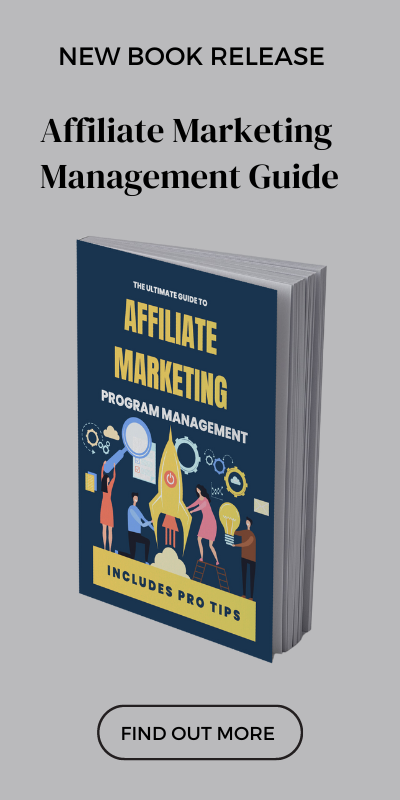Like with all digital channels, we must have a full view of our affiliate marketing costs. That way, we can analyse if the channel is as profitable as it could be.
In this article, I am going to run through some of the affiliate costs you should be aware of.
Listing these out and building budgets and targets against them will keep you and your team focused on the channel’s true ROI.
Network Costs
From the outset, it is imperative as a brand, you have a clear understanding of any network fees.
Your only fee with networks is not just the commission you pay to your affiliates.
Networks will charge additional fees for powering the technology and platform that facilitates your program. Such as:
Override – This is a percentage of commission paid to your affiliates. For example, should you pay out £1,000 in commissions the network might charge a 25% fee. So, instead of £1,000, your monthly network fee becomes £1,250.
Monthly Fee – Instead or in addition to an override, affiliate networks might charge a standard fee every month. This can vary depending on the brand and what a network might earn from a standard override model.
Integration Fee – For new brands launching an affiliate program, you might incur an integration or launch fee. Working with brands that may have limited knowledge of the industry can be time-consuming. This fee covers all the tracking and support a brand may need pre-launch.
Whether it is a launch fee or an ongoing monthly cost. Make sure you scour your contract to get these numbers and record them against revenue each month.
Commission Costs
The commission your affiliate program offers can be an attractive proposition to new partners. But, there is no point stretching yourselves to please affiliates, when in reality the numbers don’t stack up.
It is important to be realistic.
Should you find you can’t compete with a competitors commission rate due to your profit margins. Think about what else you can offer partners as a point of difference to entice them. This may well be a tailored approach depending on the publisher type or their website needs.
If you are just launching your affiliate program then your KPI’s at the start should be about onboarding the best partners for your brand. Not necessarily about delivering the best ROI.
I always like to double the commission for the first month of launch. This way you have specifically informed that the default rate will drop so it’s in an affiliates interest to join and start promoting quickly.
The launch offer might lower your ROI or even have the program running at a loss at the beginning. But, could be a great way to accelerate affiliates to join your program.
Tiered commission rates are always worth considering. Flat rates might be easier for an affiliate to digest. But, tiered rates offers flexibility for the brand.
You might want to offer different commission for various reasons including:
- Product type
- New vs existing customer
- Payment type
- Publisher type
- Voucher code use
No matter whether you have a flat commission rate or tiered model. Take note of your key publishers and their average earnings per click (EPC) or average commission rates over time. This will determine if your program is still proving to be a good earner for them.
Management Costs
No matter if you have outsourced your program management to an external source or are running in-house. It is important to keep a close eye on management costs.
Factoring in your management fees can ensure you understand the true value of the affiliate channel.
Working your ROI back from this granular detail can also shed light on whether external management is providing value for money. Alternatively, it may highlight available money to hire external specialist support to supercharge your program.
To better streamline performance and costs, you might want to tailor contracts on an incentive basis. Linking additional costs to the success of your program can in theory be co-productive.
But, I would caution against this approach especially when outsourcing management. If there is no guarantee of fees, it can be difficult for any agency to manage internal resources. So, you may get left with low-level management to be on the safe side.
Additional Tools
Affiliate networks or tracking platforms do a great job of enabling you to start an out-of-the-box affiliate program. Though over time you may face some limitations.
I for one, always prefer using third-party reporting tools like Affluent. They make my affiliate data more digestible. Other tools you might need to run your program could be:
- Graphic design technology
- Affiliate recruitment
- CRM system
- Compliance tools
- Product feeds
Analyse the capabilities of your network. Then assess whether any additional tools would help reduce wasted time and help produce a better affiliate program.
If you feel they would be worth the money, it needs to be included in your affiliate budgets.
Attribution
No digital channel should be viewed in isolation. A customer could have multiple touchpoints of your brand through different channels before deciding to purchase from you.
To be able to see if there was any cannibalisation of sales, firstly, you need to be able to see the interactions. On a basic level, most affiliate networks will show you if any orders have been attributed to another channel.
For more in-depth data mapping you may need to dig into Google Analytics or use a third-party tool.
Once you have a clearer view of the conversion path you can understand what part affiliates play in the journey.
Although, it is important to have context. You may see certain affiliates coming in at the end of the journey to earn the commission. But, do you know whether that customer would have purchased without the affiliate? Buying habits have changed with affiliates like cashback and coupons an integral part of the purchase funnel.
To get a clear picture of the incrementality of brands affiliate marketing might take some trial and error. Don’t dismiss an affiliate or publisher category without having the data to prove their sales are cannibalising other channels and adding little benefit to the customer or the brand.
Conclusion
Running an affiliate program does not need to be expensive. Although, you should be aware of all costs no matter how small they are.
We know that large commission rates will appeal to more affiliates. But, if they aren’t commercially viable to you, don’t get sucked into offering them back.
Always take a step back and look at the full picture. Why would an affiliate promote you and what would they need to do so? The commission is one element, but a robust product feed, access to strong creative or co-branded landing pages could all be just as attractive.
Asses every part of your affiliate program and decide exactly what you need for the program to be as successful it can be. Then work back from this to start understanding the costs involved and what your ROI from the channel will be.
Are there any additional costs I might have missed? Let me know in the comments section below.




